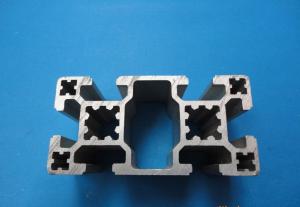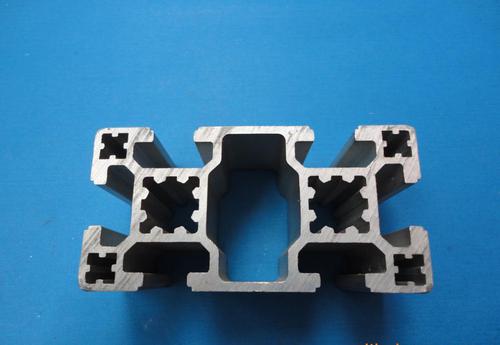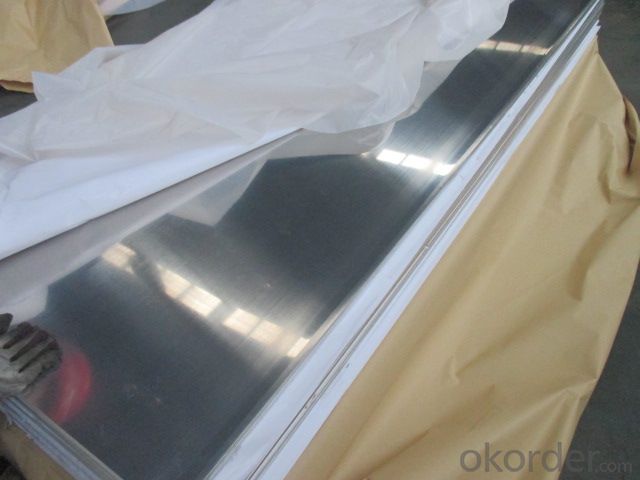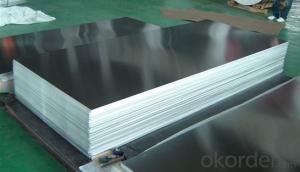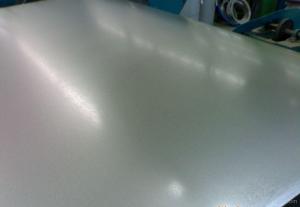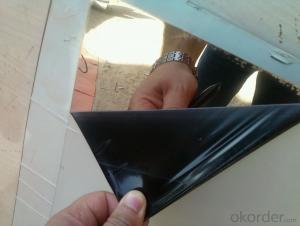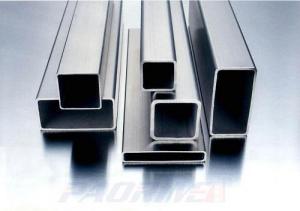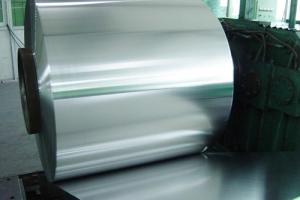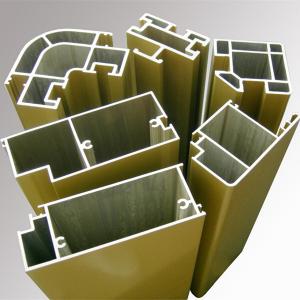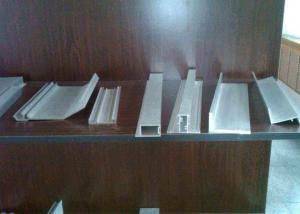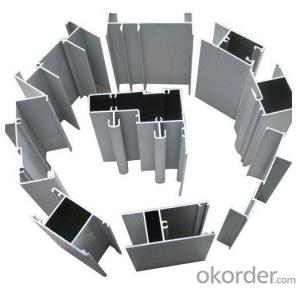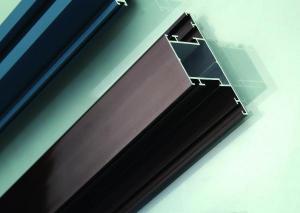Aluminum Extruded Profiles - Cold Rolled and Hot Rolled Aluminum Sheets
- Loading Port:
- Shanghai
- Payment Terms:
- TT or LC
- Min Order Qty:
- 8 m.t.
- Supply Capability:
- 5000 m.t./month
OKorder Service Pledge
OKorder Financial Service
You Might Also Like
1.Structure of Product Description
Cold rolled aluminum sheet and cold drawn sheet and other grades and alloy number and tempers and hot rolled aluminum plate are all widely used in the field off construction field and decoration field, etc.
There are many different grades, such as: 1000 series, 2000 series, 3000 series, 5052,5754,5083,6061,6063,8011, etc.
The temper is include H14, H22, H24,O,F, H44,H112,H114,etc.
2. Main features of the product
a.Competitive price
b.Frist-Class Service.
c. Shortest service.
3. Image.

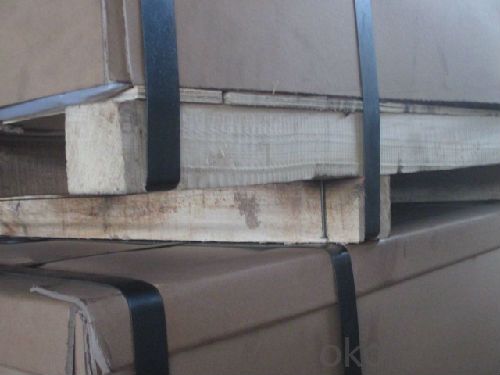
4. Product detailed sizes:
1000mm*2000mm, 1219mm*2438mm,1250mm*2500mm,1500mm*3000mm, etc.
5. FAQ:
What is the quality standard?
---Usually our standard is GB3880-2006 or others.
What is the width range?
---It is from 1000mm to 2500mm, etc.
---Normally it is around 9000 tons totally.
Where is your client from?
---Normally it is from Japan, Bangladesh,SRI LANKA,
USA, ENGLISH, SINGAPORE, VIETNAM, INDONESIA,JAPAN, ENGLAND, ETC.
What is your mainly products?
---Normally they are aluminum sheet, checkered sheet, checkered sheet and other grade aluminum sheet
mirror finish aluminium sheet, aluminum casting coil, we can also produce PPGI, GI, and some ohter grades are also very best-selling in this construction field, etc.
- Q: Can aluminum profiles be used in the construction of amusement park rides?
- Indeed, amusement park rides can be constructed using aluminum profiles. Aluminum is a favored material for building different parts of amusement park rides because of its lightweight nature and durability. The profiles can be effortlessly molded and joined together to form intricate structures like roller coaster tracks, supports, and frames for other rides. Moreover, aluminum's resistance to corrosion makes it suitable for outdoor settings where the rides are subjected to weather conditions. Furthermore, aluminum is an environmentally friendly option for amusement park ride construction as it can be recycled, showcasing its sustainability. In conclusion, aluminum profiles offer a flexible and dependable choice for creating secure and thrilling amusement park rides.
- Q: This question asks about the various types of aluminum profiles that are specifically used for flooring applications.
- <p>Aluminum profiles for flooring are designed to provide structural support and stability to the flooring system. Common types include: 1. T-profiles, which are used as support beams and can be easily connected to create a grid structure. 2. U-profiles, often used as edge trims or for creating a border around the flooring area. 3. H-profiles, which are suitable for heavy-duty applications and provide high load-bearing capabilities. 4. L-profiles, used for creating corners or edges in flooring systems. 5. C-profiles, which are used for covering or hiding the edges of the floor. Each type offers different benefits and is chosen based on the specific requirements of the flooring project, such as load capacity, aesthetic considerations, and ease of installation.</p>
- Q: The user is inquiring about the efficiency of aluminum profile recycling in their region and seeks details on how it can be done.
- <p>Yes, aluminum profiles can be recycled efficiently in most regions due to their high value and the relatively low energy required for recycling. The process typically involves collection, sorting, melting, and recasting into new aluminum products. To recycle aluminum profiles in your region, you can check for local recycling centers or scrapyards that accept aluminum. Some municipalities also have curbside recycling programs that include aluminum. Ensure that the profiles are clean and free of non-aluminum components before recycling to maximize their value and efficiency in the recycling process.</p>
- Q: What are the different shapes and profiles available for aluminum profiles?
- There are several different shapes and profiles available for aluminum profiles, each with its own unique characteristics and applications. Some of the most common shapes and profiles include: 1. Square and rectangular profiles: These profiles have straight sides and sharp corners, making them ideal for applications where strength and rigidity are required. They are commonly used in architectural structures, frames, and support systems. 2. T-shape profiles: T-shaped profiles consist of a flange or arm extending perpendicular to a larger base. These profiles are often used for structural applications where additional strength and support are needed, such as in beams and columns. 3. Round profiles: Round profiles have a circular cross-section and are commonly used in applications where a smooth and seamless appearance is desired. They are often utilized in decorative applications, such as handrails, lighting fixtures, and furniture. 4. Angle profiles: Angle profiles have two perpendicular sides, forming a 90-degree angle. These profiles are commonly used for corner protection, edging, and framing applications. They are often seen in construction, manufacturing, and automotive industries. 5. I-beam profiles: I-beam profiles feature a central vertical web with two flanges on either side, creating an "I" shape. These profiles are known for their high strength-to-weight ratio and are often used in structural applications, such as bridges, buildings, and heavy-duty machinery. 6. Custom profiles: In addition to the standard shapes mentioned above, aluminum profiles can also be custom-designed and extruded to meet specific requirements. This allows for endless possibilities in terms of shape, size, and functionality. Overall, the availability of different shapes and profiles for aluminum profiles allows for versatility and adaptability in various industries and applications. Whether you need strength, aesthetics, or a combination of both, there is a suitable aluminum profile shape and profile for your specific needs.
- Q: Are aluminum profiles suitable for material handling equipment?
- Yes, aluminum profiles are suitable for material handling equipment. Aluminum is a lightweight and durable material that offers excellent strength-to-weight ratio, making it ideal for applications that require easy maneuverability and lifting capacities. Additionally, aluminum profiles can be easily customized and assembled, allowing for versatile designs that can meet various material handling needs.
- Q: How do aluminum profiles perform in terms of impact resistance?
- Known for their excellent impact resistance, aluminum profiles are able to withstand significant impact without becoming easily deformed or damaged, thanks to their inherent strength and durability. The ideal strength-to-weight ratio of aluminum makes it particularly suitable for industries such as automotive, aerospace, and construction, where impact resistance is crucial. In addition, the structure of aluminum profiles allows them to absorb and distribute impact energy, thereby preventing localized damage. This property proves especially advantageous in situations that require resistance to sudden shocks, collisions, or heavy loads. Moreover, aluminum profiles can be customized with specific reinforcements or structural elements to further enhance their impact resistance. This flexibility allows for meeting specific requirements or addressing areas prone to impact. In summary, the exceptional impact resistance of aluminum profiles makes them highly valued in industries and applications where strength and durability are essential.
- Q: This question asks for methods to guarantee the quality and reliability of purchased aluminum profiles.
- <p>To ensure the quality and reliability of aluminum profiles, first, check the supplier's reputation and certifications. Request third-party quality certifications such as ISO 9001. Inspect the profiles for uniformity in thickness and straightness. Look for any defects like cracks or inclusions. Test the hardness and strength of the aluminum. Ensure the profiles meet the required specifications for your application. Request samples for testing before bulk purchase. Lastly, consider the supplier's after-sales service and warranty policies.</p>
- Q: What are the design options for aluminum profiles?
- There are several design options available when it comes to aluminum profiles, allowing for a wide range of applications and customization possibilities. Here are some of the design options commonly used with aluminum profiles: 1. Extrusion Shapes: Aluminum profiles can be extruded into various shapes, such as square, rectangular, round, T-shaped, I-shaped, or custom profiles. This flexibility in shape allows designers to create profiles that perfectly match the requirements of their project. 2. Surface Finishes: Aluminum profiles can be finished with different surface treatments to enhance their appearance and protect them from corrosion. Some popular surface finishes include anodizing, powder coating, polishing, brushing, and laminating. These finishes can provide a variety of colors, textures, and levels of glossiness to match specific design preferences. 3. T-Slot Profiles: T-slot profiles are a type of aluminum extrusion that features a T-shaped slot on one or more sides. These profiles are commonly used in the construction of frameworks, machine guards, and other structures that require easy assembly and reconfiguration. The T-slot design allows for easy insertion and adjustment of connecting elements such as bolts, nuts, and brackets. 4. Thermal Break Profiles: Thermal break profiles are designed with a thermal barrier inserted between the interior and exterior parts of the profile. This design helps to minimize the transfer of heat or cold between the two sides, making them suitable for applications where thermal insulation is important, such as windows, doors, and curtain walls. 5. Customization: Aluminum profiles can be further customized through additional machining processes, such as cutting, drilling, tapping, milling, or bending. These processes allow for the creation of unique shapes, hole patterns, or features that meet specific design requirements. 6. Integration: Aluminum profiles can be designed to integrate with other components or systems, such as hinges, connectors, fasteners, or brackets. This integration capability provides flexibility in assembly and allows for the creation of complex structures or modular systems. Overall, the design options for aluminum profiles are vast, allowing for versatility, functionality, and aesthetic appeal. Designers can choose from a range of shapes, finishes, and additional features to create aluminum profiles that meet their specific project needs.
- Q: Can aluminum profiles be used in the production of medical devices?
- Yes, aluminum profiles can be used in the production of medical devices. Aluminum is a lightweight and highly versatile material that is commonly used in the healthcare industry due to its excellent strength-to-weight ratio, corrosion resistance, and ease of sterilization. It can be shaped into different profiles to meet the specific requirements of medical devices, making it a suitable choice for various applications such as surgical instruments, diagnostic equipment, and prosthetics.
- Q: How do aluminum profiles perform in fire-resistant structures?
- Aluminum profiles perform exceptionally well in fire-resistant structures due to their inherent fire-resistant properties. Aluminum has a high melting point and does not contribute to the spread of fire, making it a preferred choice for construction materials in fire-resistant structures. Additionally, aluminum profiles maintain their structural integrity even in high temperatures, providing excellent fire protection and ensuring the safety of the building and its occupants.
Send your message to us
Aluminum Extruded Profiles - Cold Rolled and Hot Rolled Aluminum Sheets
- Loading Port:
- Shanghai
- Payment Terms:
- TT or LC
- Min Order Qty:
- 8 m.t.
- Supply Capability:
- 5000 m.t./month
OKorder Service Pledge
OKorder Financial Service
Similar products
Hot products
Hot Searches
Related keywords
